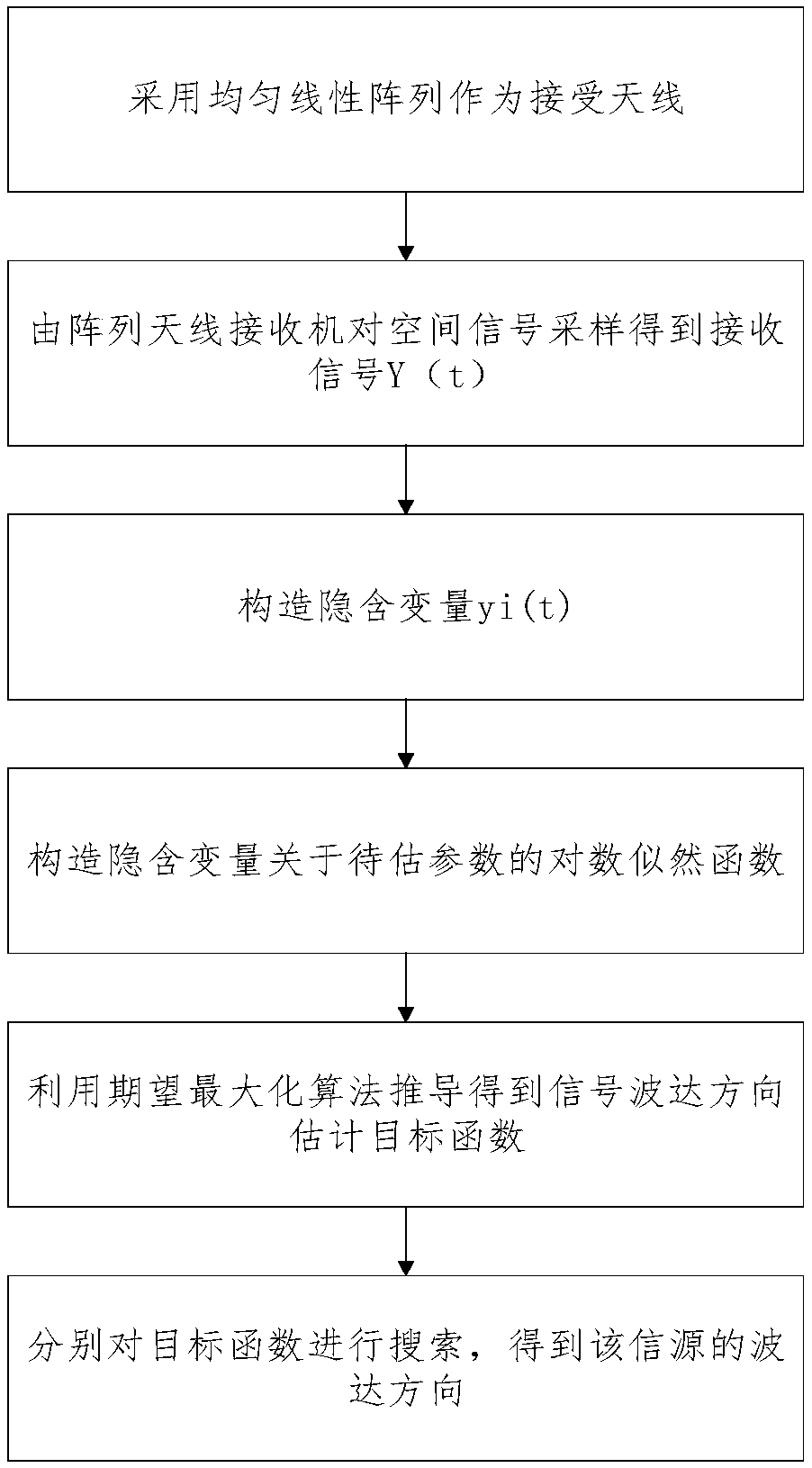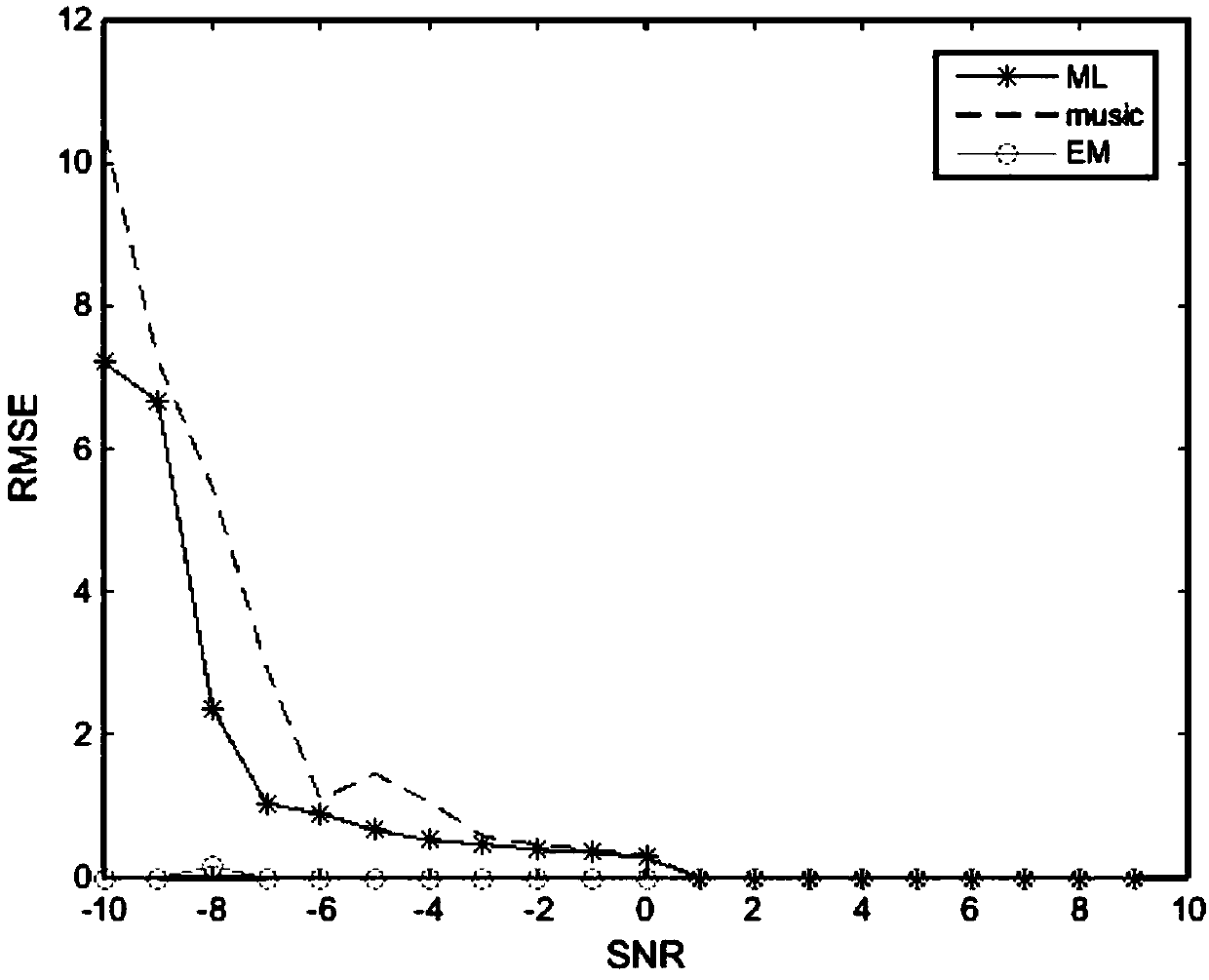Method for estimating direction of arrival of narrowband signal based on expectation-maximization algorithm
A technology of direction of arrival estimation and expectation maximization, applied in the field of signal processing, it can solve the problems of degraded estimation performance, low estimation resolution, and error-prone multi-dimensional search, achieving good stability and resolution, and avoiding errors.
- Summary
- Abstract
- Description
- Claims
- Application Information
AI Technical Summary
Problems solved by technology
Method used
Image
Examples
Embodiment 1
[0040] Embodiment 1: as figure 1 As shown, a narrowband signal direction of arrival estimation method based on expectation maximization, the specific steps are as follows:
[0041] Step 1: Use the antenna receiver to form an equidistant uniform line array.
[0042] One antenna receiver is placed at a distance d, and a total of M are placed to form a uniform line array. Each antenna receiver becomes an array element. Suppose there are P far-field narrowband signals incident on the uniform line array, and the signal is in Gaussian white noise with zero mean value is added to the propagation process, where, M≥P, λ is the wavelength of the incident signal.
[0043] Step 2: Sampling the spatial signal to obtain the received signal Y(t).
[0044] Step 3: Construct Hidden Variables It represents the output of the i-th signal on the array, then the output of P signals on the array can be expressed as
[0045] Step 4: Implicit variable y in construction i (t) The logarithmic ...
Embodiment 2
[0072] Embodiment 2: calculate according to the method in embodiment 1, wherein consider the uniform linear array that 8 omnidirectional array elements are formed, the array element spacing is 0.5, the number of sampling points is 100, and the airspace angle search range is [-90 ° 90 °].
[0073] The formula for calculating the mean square error is:
[0074] In the formula, I represents the number of Monte Carlo experiments, Indicates the direction of arrival angle of the i-th trial, θ p Indicates the true direction of arrival of the signal.
[0075] Assuming that three independent signal sources are incident on an equidistant uniform linear array composed of 8 omnidirectional array elements at angles [-30° 30° 60°], the signal-to-noise ratio of this experiment increases from -10dB to 10dB, and each signal Carry out 50 independent DOA estimation experiments under the noise ratio, utilize the method of the present invention to compare with the DOA estimates obtained by th...
PUM
 Login to View More
Login to View More Abstract
Description
Claims
Application Information
 Login to View More
Login to View More - R&D
- Intellectual Property
- Life Sciences
- Materials
- Tech Scout
- Unparalleled Data Quality
- Higher Quality Content
- 60% Fewer Hallucinations
Browse by: Latest US Patents, China's latest patents, Technical Efficacy Thesaurus, Application Domain, Technology Topic, Popular Technical Reports.
© 2025 PatSnap. All rights reserved.Legal|Privacy policy|Modern Slavery Act Transparency Statement|Sitemap|About US| Contact US: help@patsnap.com



